Most people find the simplest ways to heal their injuries or even reduce the symptoms that come along with varicose veins after exercising. 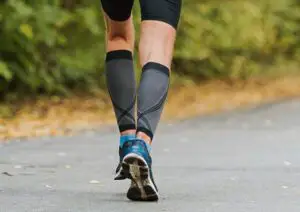 Compressions socks are one of the best ways one can use to reduce pain and swellings on their feet muscles; read through the article to understand everything you would want to know, including the following:
Compressions socks are one of the best ways one can use to reduce pain and swellings on their feet muscles; read through the article to understand everything you would want to know, including the following:
-
- What you should know on compression socks and compression sock therapy
- Using compression socks to prevent injuries
- Safety tips on using compression socks
What Are Compression Socks?
Compression socks are a special type of socks designed to help one prevent the general occurrence and offer protection against further continuous venous disorders, such as thrombosis, edema, and phlebitis.
They are always elastic-like any other compression garment, worn around the legs so as they compress the limb’s intended parts; generally, they are meant to offer compressing therapy.
Do Compression Sock Help Recovery from Injuries?
Compression sock offers great help when it comes to helping injury recoveries.
The research and studies conducted have proved that wearing compression socks can help one recover from injuries fast and safely
. The following are several ways compression socks will ensure that your injuries recover quickly and maintain your general health:
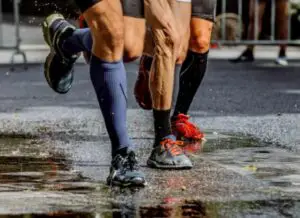
• DOMS
Several research and studies have revealed that compression socks can help you reduce the amount of pain that one feels after exercising, commonly known as DOMS.
This happens because compression therapy enables your body and muscles to get rid of the waste easily and quicker easily; evidence has been provided showing how the compression socks improve muscles’ blood circulation when one chooses to wear them after doing an exercise or when resting.
• Strength, power, endurance
It is the most common way to determine the length an athlete or any other person exercising will take to recover, gain back full strength, endurance, and power that they were at before they got to the run or the exercising session.
All the athletes who choose the compression socks after exercising show quick recovery for their before strength and power, and they have a lesser extent endurance. This is not the case for athletes that do not wear compression garments.
• The type of exercise
The exercise is more damaging; the recovery benefits seem higher for any athlete who chooses to wear compression garments.
This was as a result of a study conducted between a strength training and a running person; the strength training person recovered faster with the compression sock while the one who did an exercise that involved little muscle damages took some time to recover, but this was still faster than the ones who wore nothing for their recovery.
• Fatigue
Fatigue is one of the commonest things every athlete feels after exercising.
Therefore, they will need a better way to reduce the fatigue they feel while exercising, after, and even during their injury recovery sessions.
The athletes who wear the compression socks have reported feeling less tired while on injury recovery, something different from those who do not wear this.
To learn more about compression socks’ benefits, you can read the previous article: what do compression socks do.
How Do Compression Socks Help?
Compression socks help in various great ways, in that the limb muscles do not get clumped and cause other related diseases or complications.
Research and studies have been conducted to bring out several ways that the compression socks help athletes and other exercising personnel, the following are the main ways it helps through:
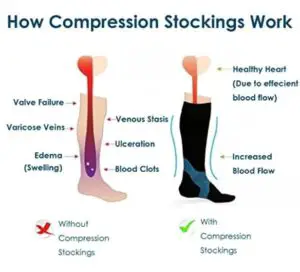
• They improve blood circulation
Research has shown that compression socks that are tight at the bottom and loose at the top have the effect of increasing venous blood flow and preventing blood from pooling on the limbs.
This is important to athletes as they recover faster since they get rid of waste products more quickly after exercise.
The muscles will be supplied with enough oxygen resulting in less muscle swelling as the oxygen and nutrients circulation is improved.
• Improved lymph drainage
Compression socks have been discovered to improve lymph drainage greatly; the lymph vessels are meant to move all the waste products from the cells to the blood to ensure they are excreted through urine or any other form of excretion.
Where the lymph drainage is improved, the recovery rate is improved as much as the healing speed.
• Offers muscle protection
Compression socks help protect your muscles as one is exercising by reducing the effect forces on your muscles, which helps reduce exercise-induced inflammation, muscle damage, and swelling.
The muscles are well protected even the healing and recovery time will be reduced as there is no waste accumulation on the muscles.
About Compression Therapy
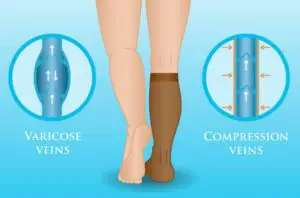 Compression therapy is an easy and more effective way of increasing the blood flow on your lower limbs by strengthening the vein support.
Compression therapy is an easy and more effective way of increasing the blood flow on your lower limbs by strengthening the vein support.
Being a form of simple but advanced wound care is to gently apply pressure to legs and ankles by wearing specifically designed compression socks or stockings.
The garments work by stretching out vein walls and improving the general circulation, which will help reduce or eliminate swelling.
Compression therapy helps eliminate any further issues that can occur due to untreated chronic venous diseases.
There is no compression therapy effect. There will be chances of developing dilated veins that can easily drain your limbs, leading to heavy fatigue periods, which calls for a sudden pain burst.
Therefore compression therapy acts as the main treatment that will help alleviate aching as it loosens the constrictions between the vein walls.
Basic Knowledge of Blood Flow You Should Know
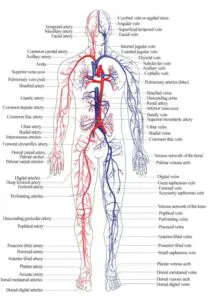
The heart is the organ of the body responsible for pumping blood to circulate the whole parts of your body; it ensures that oxygenated blood gets out of the arteries and moves all over the body from the head to the toes.
The muscles and cells need enough oxygen and nutrients, and blood always gets purified in the heart once in the limbs; it becomes quite harder to get back to the heart due to gravity; this can limit the amount of oxygen and nutrients in limb muscles.
That being one reason why blood flows back to the heart through the veins without valves that prevent blood from flowing back. However, muscles can also act as a blood pump, especially when they contract during exercises aiding blood to get to the heart quickly.
How One Can Use Compression Socks for Shin Splints and Other Small Injuries?
Shin splints normally occur where the muscles and tendons on the shinbone easily get inflamed; in common cases, the inflammation starts from the shinbones inside the edge. In some cases, these shin splints go away on their own, but in most cases, they require some treatments as you avoid exercising on the healing process.
Using compression socks is one of the greatest ideas for treating shin splints and other related small injuries. You can use compression socks around your shin area to reduce the inflammation rate down in several ways.
Here are some ways in which compression socks will help prevent and heal shin splints:
• Maximizing blood flow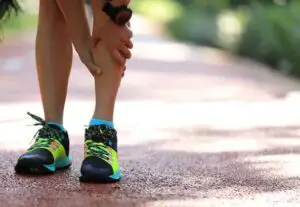
Compression socks were meant to stay tight at the ankle or foot easily and loosen as it moves up to the calf; this improves blood flow in the shins as the dirty blood is quickly moved back to the heart. When the blood flow is enhanced, healing becomes easy because the muscles are fully fueled and supplied with enough nutrients.
• Prevents swelling and stiffness
When the affected area is compressed, the possibilities of welling and stiffness are reduced; this can be very effective where you have shin splints, and you are aiming at preventing swelling. Lactic acid is completely removed from your muscles, keeping them highly hydrated and in a better condition reducing the pain caused by shin splints.
Can Compression Socks Be Able to Prevent Injuries?
Yes, they can!
Compression socks will enable one to prevent injuries in the following ways:
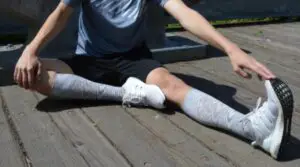
• They Ensure stabilization and support
Running, jumping, and all other exercises of that sort can easily cause injuries; on the same, these moves can be made safer with compression socks. As they act as braces that stabilize and support the muscles or joints, thus offering injury protection, which is brought about by muscle stretching.
• They prevent blisters
One main function of compression socks is to reduce friction with the padded cushioning on the blister hotspots. The high-tech fibers easily reduce moisture and enable your feet to remain dry and all blister-free through the finish line, preventing any blister-related injuries.
• They help temperature regulation
Temperature plays an important role in muscles’ health; muscles tend to contract when the temperatures are low, making them highly vulnerable to wear and tear. The hot temperatures can easily cause heatstroke to the muscles.
The compression socks can help you prevent such muscle injuries as they enable you to maintain a healthy temperature.
How to Size Compression Socks for Running?
When you choose compression socks for running, you do not need to concentrate on your feet and shoe size only; consider finding a pair that perfectly fits your legs. A pair of socks that will be too tight will prevent proper blood flow through the lower limb area, while loose ones offer no benefit at all.
To choose the right size socks, consider measuring your calves with the consideration of your shoe size to find the perfect fit.
For instance, if your shoe size ranges between four to seven, consider choosing socks of 5.0′ to 5.5′ height, size seven to ten go for 5.6′ to 5.11′ sock height;
While the ones for ten to 13 consider 5.9′ to 6.2′ sock height.
Having an exact size compression sock for running will ensure that you are comfortable running.
And for other considerations you must know before buying, we have concluded in our article: How to choose compression socks, make sure you read this to get a perfect fit.
Dos and Don’ts on Using Compression Sock for Muscle Recovery
When using compression socks for muscle recovery, you should consider doing and avoiding the following:
Dos.
- Measure your legs accurately before choosing compression socks because if you buy the wrong size, you won’t get the expected muscle recovery benefits, and you won’t get comfortable.
- Thoroughly clean your compression socks; however, you must use clean, cold, and gentle soap while cleaning as some might not be machine washable.
- Replace them after every three to six months as the elastic fibers break off after a long time of use.
- Wear them early in the morning to enjoy all the recovery benefits; wear them while doing the daily activities for better results.
Don’ts.
- Do not roll up the compression socks when removing them or putting them on, as this can create a tight band that can cause sores or cut off circulation.
- Do not wear compression socks when going to bed because when in bed, the legs are at a neutral position, and the blood flow is best here, not unless your doctor recommends that for you.
- Do not wear oils or lotions when wearing compression socks, as this can break the elastic fibers easily.
FAQs:
Will compression socks help calf strain and pain?
No.
However, compression socks cannot cure calf strain and pain, but they can help alleviate and reduce the pain as they help prevent calf injuries. In addition to that, they will help feel much better while in the healing process, majorly, the compression socks stabilize the leg and aid in reducing the impact that causes calf pain.
Can you sleep in compression socks?
No, you should avoid wearing compression socks when going to bed, not unless your doctor prescribed this to you.
Although they are perfect in ensuring improved blood circulation, they should not be worn when sleeping; compression socks purposely move blood from your feet, and wearing them when lying down can block blood flow.
Do compression socks help with aching legs?
Compression socks can easily prevent your legs from getting tired and being itchy, as they easily reduce feet swelling on the feet and ankles. This further treats some foot complications such as varicose veins and spider diseases.
Is there any downside to using compression socks?
Generally, compression socks are safe, which means that wearing them can lead to very few or zero downsides, provided that they are worn well and smoothly around the leg with no fold-ups.
However, for a certain group of people who might have sensory problems such as peripheral neuropathy who finds it hard to feel when the compression socks become so tight, a thing that can easily interfere with your general blood circulation.
Compression Socks Are Effective Though They Cannot Cure All
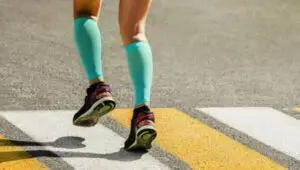
Compression socks are highly effective in treating venous insufficiency; however, they are normally combined with several other vein care treatments.
The compressions can only reduce a great number of venous disease symptoms such as swollen legs, fatigue, or aching legs, but they do not completely cure venous insufficiency.
Conclusion
Compression socks are a great way of naturally improving your blood circulation on the muscles, thus reducing the swelling effect resulting from pain, among other diseases.
The varicose veins disorder can be easily regulated and even get treatment when one wears compression socks when necessary incorporating the other required treatment methods.

